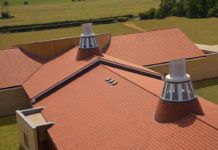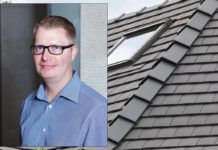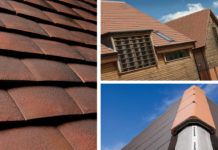 The Victorians were not great fans of flat roofs for their houses, with normally only minor features such as bays, dormers or porches having flat roofs. In the 20th century, flat roofs became more popular, often for house extensions, and most commonly comprising built-up felt construction. The problem was that, depending on the quality of the workmanship, these flat roofs only lasted around ten to 15 years at best. This gave the flat roofing industry, perhaps somewhat unfairly, a poor reputation. For example, Building Societies were often reluctant to offer a mortgage on a property with a flat roof, or at best, there would be a proviso that the flat roof had to be upgraded or changed to a pitched roof. It has taken, and is to an extent in my view still taking, the flat roofing industry a long time to shake off its poor reputation. Modern domestic flat roofs have become much more advanced, in installation techniques and quality of materials, resulting in long-term durability guarantees being commonly provided either by the installer, or as an independent insurance-backed warranty.
The Victorians were not great fans of flat roofs for their houses, with normally only minor features such as bays, dormers or porches having flat roofs. In the 20th century, flat roofs became more popular, often for house extensions, and most commonly comprising built-up felt construction. The problem was that, depending on the quality of the workmanship, these flat roofs only lasted around ten to 15 years at best. This gave the flat roofing industry, perhaps somewhat unfairly, a poor reputation. For example, Building Societies were often reluctant to offer a mortgage on a property with a flat roof, or at best, there would be a proviso that the flat roof had to be upgraded or changed to a pitched roof. It has taken, and is to an extent in my view still taking, the flat roofing industry a long time to shake off its poor reputation. Modern domestic flat roofs have become much more advanced, in installation techniques and quality of materials, resulting in long-term durability guarantees being commonly provided either by the installer, or as an independent insurance-backed warranty.
So, why am I, a pitched roofing man through and through, telling you this? The publication in August of the latest revision to BS 5534 signals a great opportunity to the tile and slate pitched roofing industry to not only improve standards, but to think about the way we design and construct our roofs. My concern is that if we do not take this opportunity, then we risk damaging the reputation of tile and slate pitched roofing in the long-term.
Great strides
Pitched roofing materials have improved greatly over the past 50 years or so; we have made great strides in our manufacturing Standards for clay and concrete roof tiles. Ever-closer manufacturing tolerances and improved firing techniques make clay tiles more affordable and easier to use. For example, Wienerberger’s Sandtoft New Generation range makes installing clay tiles easier and faster than ever. Similarly, concrete roof tiles benefit from better control in batch mixing techniques and curing chambers, high quality finishes, resulting in more consistency in appearance, strength and long-term durability.
Similarly, other components, such as underlays, timber battens and fixings have all improved, not forgetting dry fix systems that make a roof virtually maintenance-free. It is important, therefore, that pitched roof construction design and installation techniques keep pace with the changes in materials.
Widespread adoption of the new BS 5534 will go a long way to improving pitched roofing standards; in future all tiles on a roof will have to be mechanically fixed. It will no longer be acceptable to rely on mortar bedding to secure ridge and hip tiles, therefore these will also need to be mechanically fixed – with dry ridge and hip systems being the best option to achieve this.
Screws Vs nails
Roofers could also consider the use of screws versus nails, a practice that increases the fixing strength of each tile whilst ensuring you comply with the new requirements. A new strength requirement for underlays will mean that the underlay will make a greater contribution towards the total wind uplift resistance of the roof.
A good example of how modern materials will force the need to re-examine our construction practices, is the now common use of vapour permeable underlays. These have changed the way we control condensation in our roof structures but have created gaps in knowledge and expectation realising myths and ambiguity in the requirements. <




